Feeling stiff and sore? Though total rest is tempting when your body is recuperating from a hard workout, you will likely recover more quickly — and you’ll come back even stronger — if you forgo complete downtime in favor of a recovery workout.
Smart recovery workouts improve stability, open up stiff areas, and improve head-to-toe posture and alignment, explains coach Brian Bradley, vice president of the postural-therapy company Egoscue. This helps avoid compounding minor injuries and hiccups in the healing process.
Recovery workouts, done correctly, can also prevent new injuries. Sports-related discomfort often results when your joints are subtly misaligned due to habit, past injuries, and hours spent sitting in front of computers and televisions. The harder and more frequently you stress these poorly aligned joints, the more achy and out-of-whack they become. So even if you’re pain-free, improving your posture and alignment will sharpen your form and help avoid needless stresses to the body, regardless of your athletic endeavors or leisure-time activities.
The following recovery workout uses exercises drawn from the Egoscue Method — a system of corrective movements designed to address common misalignments, improve posture, and relieve chronic pain. It takes only 15 minutes or so, but you’ll sit, stand, and move more comfortably when you’re done.
“Getting your head and your feet in the right position helps the joints in the middle do their jobs better so the whole body functions as a well-oiled, efficient machine,” Bradley says.
Do the moves once a day, if possible, for a month, and you’ll likely notice substantial changes in other areas as well. In addition to better posture, long-term participants in the Egoscue program report improvements in sleep habits, digestion, and immune function.
The following workout doesn’t require equipment and probably won’t even make you sweat, so it’s perfect after a period of intense exercise, on an off day, or anytime you need a break from extra-rigorous movement. In the club or gym, you can use the moves as a warm-up or a cool-down, or as filler exercises between sets of more-challenging exercises.
It’s almost impossible to overdo it on these moves, so feel free to do some of them whenever the impulse strikes. Perform the exercises in a slow and focused manner. At most, you should feel a gentle, pleasant stretch, never an intense pulling or straining.
1. Standing Elbow Curls
Teaches proper alignment of ankles, hips, and spine while the upper back flexes and extends; mobilizes upper spine.
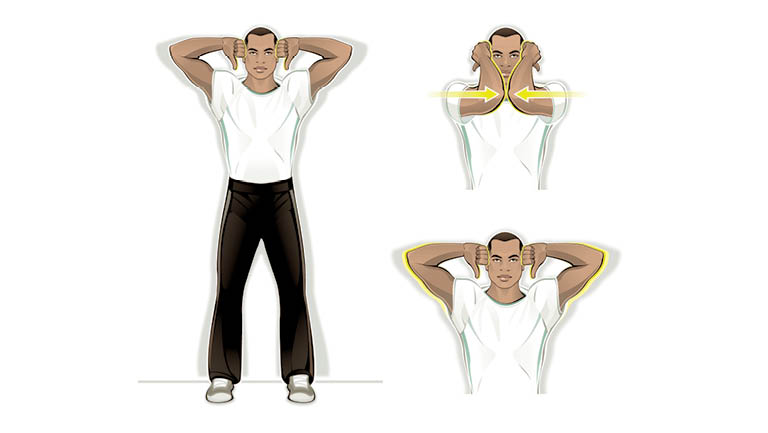
- Stand with your back against a wall. With hands in loose fists and thumbs pointing downward, place the knuckles of both hands against your temples. Spread your elbows wide, touching the wall if possible.
- Squeeze your elbows toward one another in front of you.
- Reverse the movement to spread the elbows again. Perform 25 reps.
2. Sitting Cats and Dogs
Teaches proper forward- and backward-bending mechanics throughout the entire spine and pelvis.

- Sit upright on the edge of a chair. Round your back and allow your head to tip forward.
- Then arch your back and shift your gaze up to the ceiling. Move through the hips to round and arch the back. Perform 10 reps.
3. Gravity Drop
Encourages proper “stacking” of ankles, knees, hips, spine, and neck while stretching and extending the calf muscles.
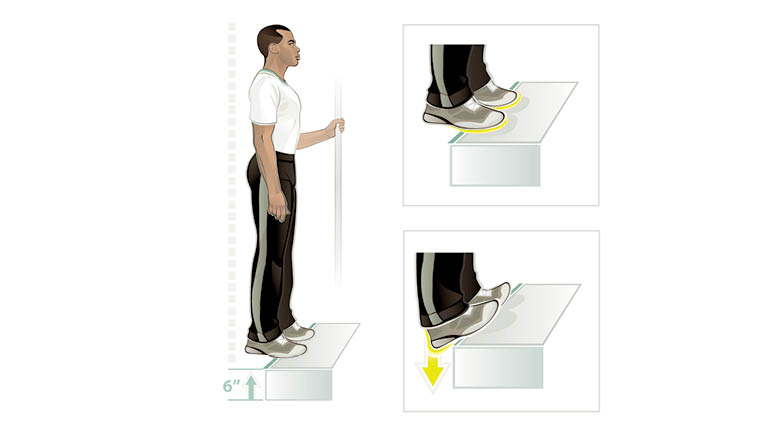
- Stand on a step with the balls of your feet only. Allow your heels to drop toward the floor.
- Hold the stretch for three minutes, using a wall or railing for support.
4. Assisted Hip Stretch
Improves stability in the hips.
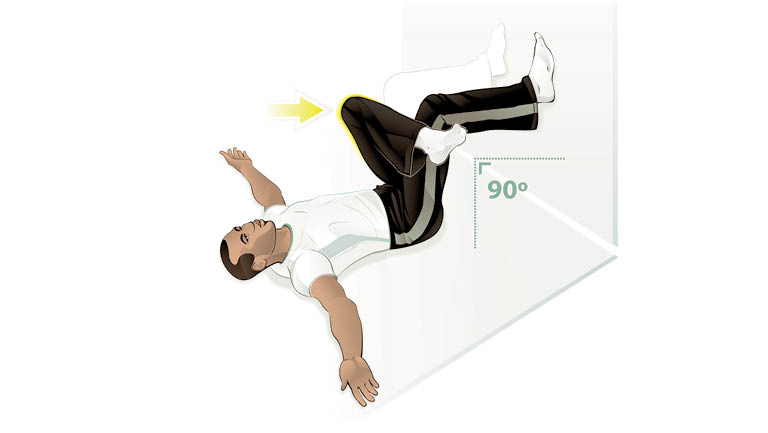
- Lie down with your feet against a wall, shins parallel to the floor. Extend arms in line with your shoulders, palms up.
- Lift one leg and place that ankle just above the opposite knee. Hold for one minute on each side.
5. Hip Crossover Stretch
Improves your ability to rotate through your hips and spine while keeping your shoulder blades engaged.
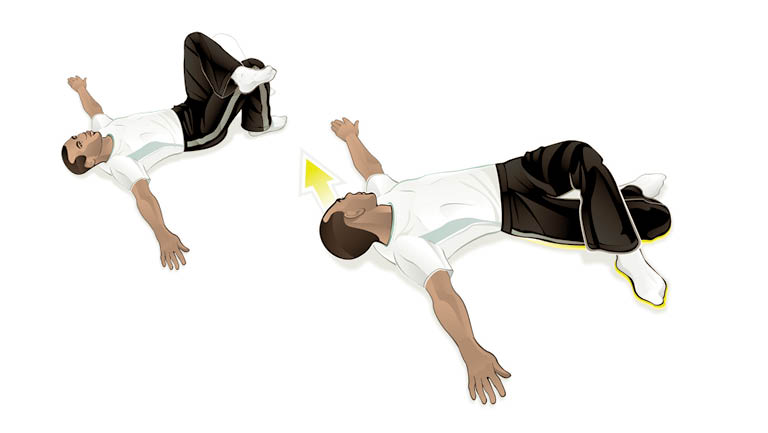
- Lie down with feet flat on the floor. Extend arms with palms facing down. Cross one ankle over the opposite leg and rotate your body in that direction.
- Rotate through your spine and upper back. Turn your head to face the direction opposite your knees. Hold for one minute on each side.
6. Downward Dog
Encourages proper engagement of the muscles along the back body.

- Begin on all fours, with the balls of your feet firmly planted. Keeping your arms straight, raise your hips up and press your heels toward the floor.
- Breathe deeply as you press your chest toward your legs. Keep your neck aligned with your spine.
- Hold the stretch for one minute.
This article has been updated. It originally appeared as “Back on Track: A Posture Recovery Workout” in the September 2013 issue of Experience Life.


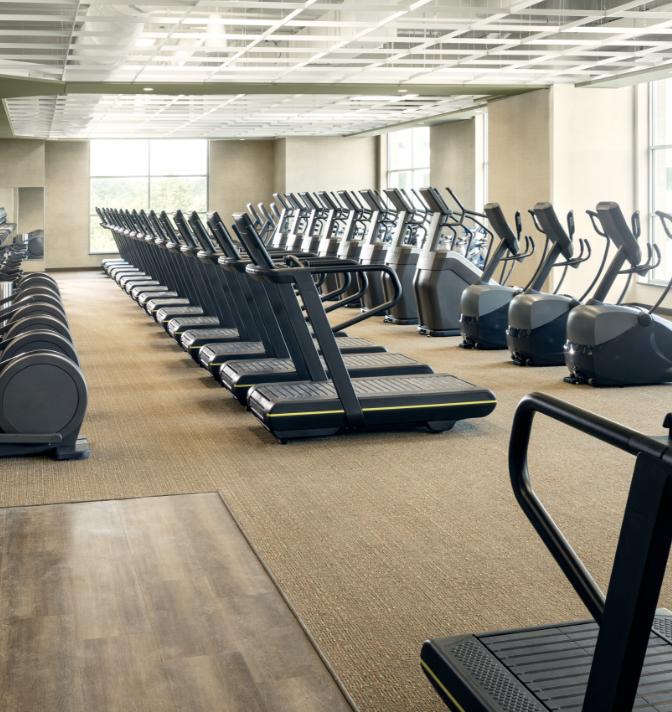
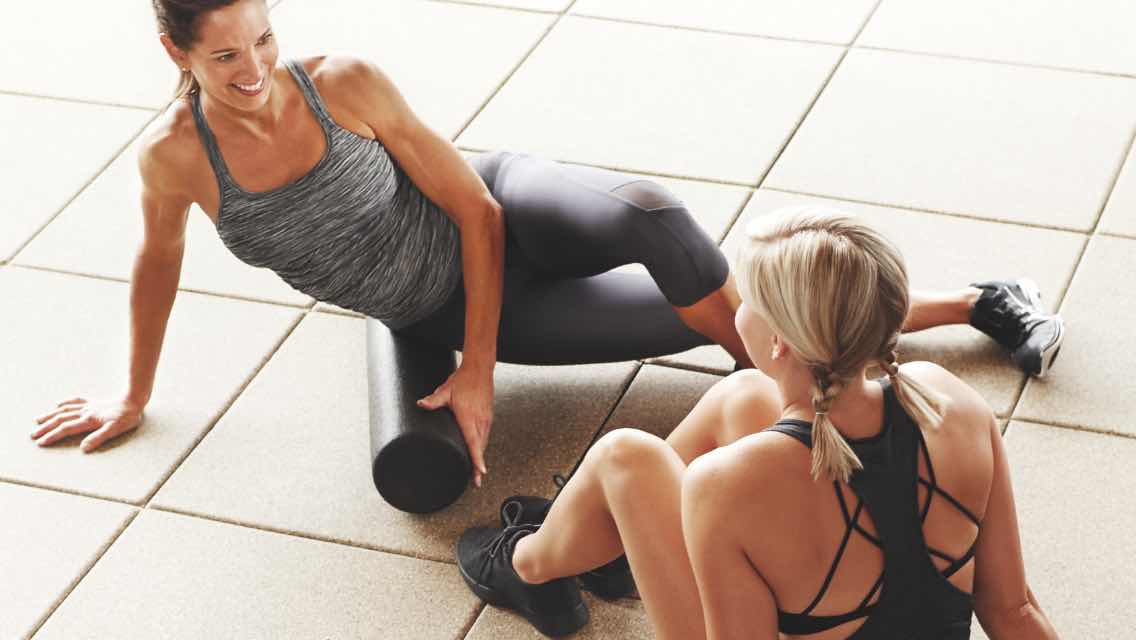
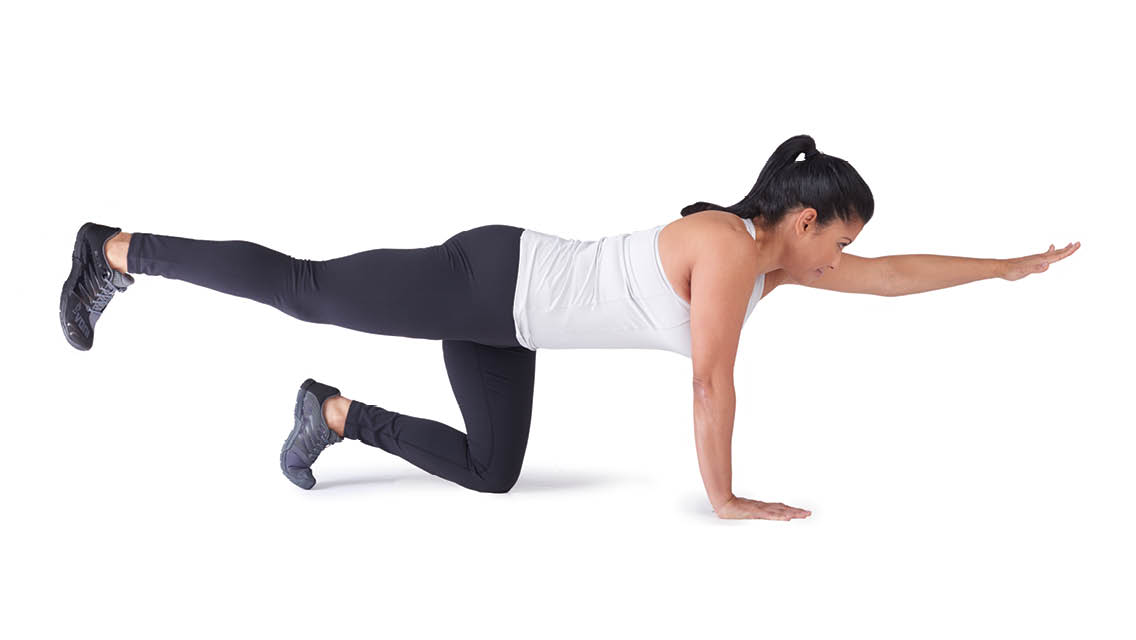
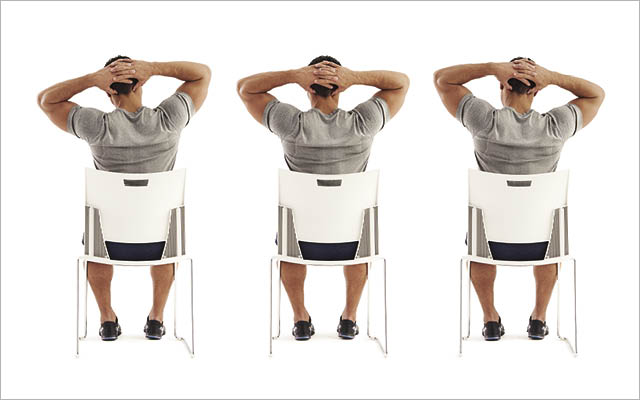
This Post Has 0 Comments